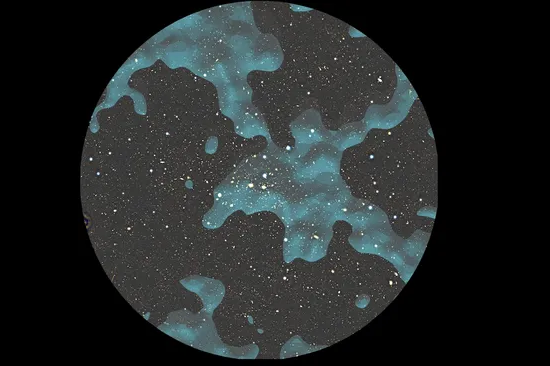Alok Jha, Science and Technology Editor for The Economist, recently wrote in a science column:
“Here’s a startling fact: most of the universe is missing. The stuff that we are made of and, for that matter, everything else we can see on Earth and also the stars, only makes up around 5% of the universe.”
So what is and where is the other 95%? That stuff that is matter has been called Dark Matter. Do we call it Dark Matter because our vision limitations make it impossible for us to see it? Can any living species on Earth when looking at the stars see Dark Matter? The answer to both questions is “No!”
So what is Dark Matter?
Dark Matter
The Dark Matter makes up 27% of the Universe. The rest is defined by another term, Dark Energy, which we have yet to detect. I promise to post the latest research on Dark Energy soon on this web site.
Getting back to Dark Matter, it remains invisible to us because it weakly interacts with the light we see. The light we cannot see, called the electromagnetic spectrum, includes infrared (IR) and ultraviolet (UV). Dark Matter is invisible to both IR and UV light as well.
We can’t see it, yet Dark Matter has been called the invisible glue that holds the cosmos together. First hypothesized in 1933, its existence was confirmed four decades later when calculations indicated that the galaxy’s visible stars typically represented about 10% of the mass required to keep them orbiting its centre. The term given for the unaccounted-for mass that produced no light was Dark Matter.
Today, astrophysicists, astronomers and cosmologists believe that since the Big Bang, it has been Dark Matter that has gathered the stars to make galaxies. It is Dark Matter that provides the infrastructure for the observable Universe.
So how can we see Dark Matter? Maybe, “see” is the wrong word. The word we should use is “infer.” Astronomers use several observational and mathematical tools to infer the existence of Dark Matter. These include:
- The observed distortions in visible light caused by gravitational lensing from distant galaxies infer the existence of Dark Matter. Using the distortions, astronomers can map where Dark Matter is distributed throughout the Universe.
- Plotting galaxy rotation curves to measure the speed of stars rotating around a galaxy. For most galaxies, there is a steep rise in the rotation curve near the galactic centre with a flattening as the mass decreases towards the outer edges. An unexpected result in the plot of the curve infers Dark Matter is present.
- When galaxies collide the observed interactions of stars and the gravitational forces holding the galaxies together infer the presence of Dark Matter.
Can Dark Matter interact with Visible Matter? Such interactions appear to be extremely rare, but should they happen, scientists believe we should see something measurable. They have divined two different strategies in the hope they can detect Dark Matter in collision with Visible Matter.
- The first involves placing sensitive detectors in deep mines to capture these collisions looking for sparks, possibly gamma rays.
- The second strategy is to smash protons together using the Large Hadron Collider at CERN to detect Dark Matter particles in the aftermath of the collisions.
The Cosmic Web
Studying the interrelationship between galaxies and galaxy clusters has led to the discovery of filaments and threads that bind the Universe together. A recent James Webb Space Telescope (JWST) image showed 10 galaxies that came into existence just 830 million years after the Big Bang. They were connected by filaments which have now been observed across the Universe. This is what is now called the Cosmic Web.
The Cosmic Web is believed to be the largest structure in the Universe measuring an estimated 10 billion light-years across. The Web contains galaxies and galaxy clusters joined together by long and thin interconnecting filaments and other structures called walls and nodes.
In studying the Cosmic Web astronomers at Yonsei University in Seoul, South Korea observed recently Dark Matter astride Cosmic Web filaments. This was a first. It is now believed that Dark Matter will be found dangling from Cosmic Web filaments throughout the Universe. No longer is Dark Matter inferred. We now can detect and “see” it as a component of Cosmic Web filaments.
The results of the Yonsei University observations were published in Nature Astronomy on January 5, 2024.
















